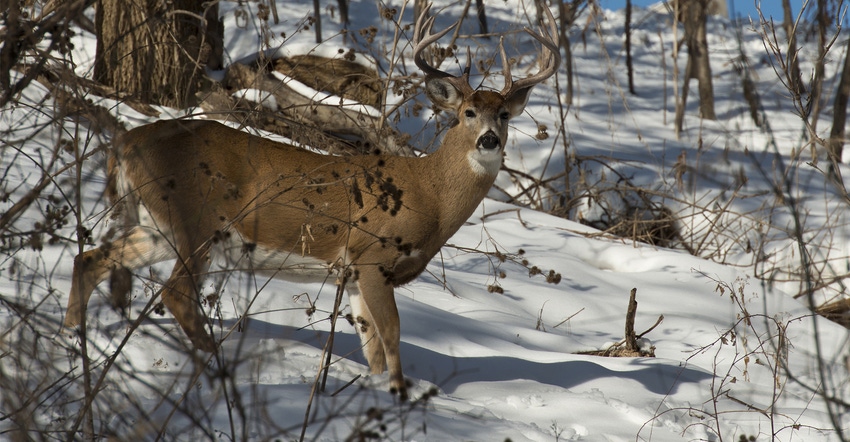November 22, 2017

Chronic wasting disease is a neurological disease that affects cervid animals, such as deer, elk or moose. It can be transmitted through direct animal to animal contact or contact with saliva, urine, feces, blood and carcass parts, such as the brain tissue and spinal cord of an infected animal.
The disease can also be spread via infected soil. Prions, which are single proteins, are what cause the infections and are not easily killed by traditional strategies such as heat. Research from the University of Texas Health Science Center at Houston has shown prions have been able to bind to the roots and leaves of wheat grass plants when incubated with contaminated material, even when incubated in highly diluted amounts. They also found that plants grown in infected soil can transport the deadly prions. Hamsters that were fed the contaminated plants contracted CWD in the research project.
Although current research has found no direct link from CWD to variant Creutzfeldt-Jakob disease (vCJD – found in humans), the Centers for Disease Control and Prevention recommend not consuming venison from infected deer. Michigan State University Extension highly recommends that venison from a positively infected CWD deer not be consumed. When in doubt, do not consume the venison and properly dispose of the entire carcass.
Michigan State University Extension has a free bulletin that explains how to field-dress, butcher and prepare venison from a healthy deer. Here is a quick checklist of additional gear to pack when hunting:
• several pairs of tight-fitting, disposable gloves to protect hunters from disease and keep deer carcass clean during the dressing process
• a clean, sharp knife that’s not a household knife to make cuts and split the carcass
• pre-moistened wipes or a container of clean water to maintain sanitation of knife and saw
• strings about 6 to 8 inches long to tie off the anus and assist in other dressing procedures
• large resealable food-grade plastic bags for the heart and liver
• clean, dry towels or paper towels to dry the carcass with after washing
• rope to tie legs apart or drag deer
• kill tag attached to a string
• flashlight
• nonporous disposable trash bags if hunting in a CWD core management zone to dispose of carcass parts, including guts
All deer harvested in the CWD core areas and management zones, core area DMU 333, as well as DMU 359, must be taken to a Michigan Department of Natural Resources checkpoint for testing Testing is encouraged for DMU 419. Deer taken from other areas are encouraged to be taken for testing, as well.
Source: MSUE
You May Also Like




